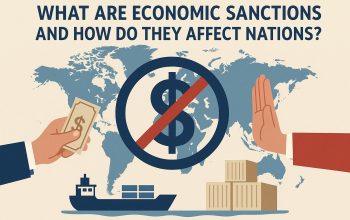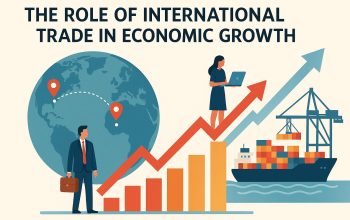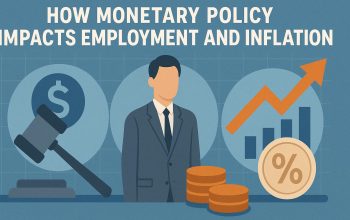The Shifting Landscape of Macroeconomics
In the realm of macroeconomics, evolving trends and potential future directions set the stage for significant changes in how economies are understood and managed. As we delve into these aspects, it becomes important to focus on a forward-looking view that encompasses technological advancements, demographic shifts, and policy evolution.
Technological Advancements
The impact of technology on macroeconomics cannot be overstated. Automation and artificial intelligence (AI) continue to redefine labor markets and productivity metrics, fundamentally altering the economic structures across the globe.
As machines become increasingly capable of performing complex tasks, certain jobs face the threat of displacement. For example, routine tasks in manufacturing and data processing are now often handled by machines, leading to a decline in demand for traditional labor in these areas. This is accompanied by the advent of new roles and opportunities in technology-driven sectors such as AI development, cybersecurity, and advanced data analytics. Navigating this dynamic landscape requires an understanding of the changing structure of employment and its implications for economic growth.
Moreover, digital currencies are gaining traction, with central bank digital currencies (CBDCs) standing out as innovative financial tools. CBDCs are designed to function as digital equivalents of a nation’s physical currency and aim to modernize the existing monetary framework. By potentially improving efficiency and reducing transaction costs, they represent a pivotal shift in how monetary policy is conducted. Their implementation allows central banks to maintain better control over the national monetary system, potentially reshaping international finance.
Demographic Changes
Demographics play a critical role in shaping economic growth and development trends across the globe. In many developed countries, aging populations pose significant challenges to sustaining economic growth rates. The issue is compounded by shrinking workforces and the mounting demands for healthcare. As average life expectancy rises and birth rates decline, the challenge of balancing resources toward pensions and health services becomes a constant concern for governments.
Conversely, some emerging markets boast youthful demographics, presenting both opportunities and challenges. While a young workforce can potentially drive economic expansion and innovation, it also demands the creation of ample employment opportunities. Governments and policymakers in these regions must navigate this demographic dividend by crafting policies that not only tap into the available human resources but also enable the economic framework to accommodate growth sustainably. The interplay of these demographic trends underscores the necessity for tailored economic strategies that inherently factor in regional characteristics.
Policy Adjustments and Globalization
The era of global economic interdependence is marked by nuanced shifts in international trade dynamics. As cross-border trade and investments increasingly influence national economies, the globalized economic paradigm has come under scrutiny. In recent years, however, certain geopolitical developments have provoked a shift towards more protectionist policies. Nations are actively reevaluating existing trade agreements and devising strategies to shield their economic interests from global uncertainties.
Fiscal and monetary policies are also experiencing unprecedented levels of scrutiny and reform. In an effort to stimulate growth while maintaining fiscal prudence, governments are innovating within the spectrum of policy tools. Instruments like quantitative easing and negative interest rates have risen to prominence, offering novel routes to manage economic fluctuations. Despite their effectiveness in certain contexts, these measures face considerable debate regarding their long-term impact on economic stability.
Sustainability and Environmental Concerns
The focus on sustainability and environmental considerations is progressively reshaping macroeconomic agendas worldwide. As nations grapple with the urgent necessity to transition towards greener practices, the challenge lies in achieving this goal without significantly hampering economic growth. Policies that support sustainable energy sources and reduce carbon emissions have gained momentum, recognizing the imperative to align economic stability with environmental imperatives.
This ongoing transition is driven by an evolving understanding of what constitutes economic success. The traditional reliance on GDP as the sole measure of economic health is being reassessed in favor of broader indicators that also incorporate environmental and societal dimensions. These new metrics are intended to provide a more holistic view of an economy’s performance, reflecting the shift towards comprehensive economic frameworks that resonate with modern societal values.
Conclusion
Macroeconomics stands at a crossroads, influenced by an array of complex factors. Understanding the interplay between technological advancements, demographic changes, policy evolution, and environmental challenges is essential for forecasting future economic trends.
These multifaceted elements collectively shape the future landscape of macroeconomics, requiring adaptive and innovative approaches to navigate the evolving global economy. Policymakers and economists must keep abreast of these transformative shifts to develop strategies that not only address immediate economic challenges but also position nations advantageously in the face of future opportunities and uncertainties.
For further insights on current macroeconomic trends and research, refer to resources such as the International Monetary Fund’s working papers or the OECD’s economic outlook. These sources offer a wealth of information and analyses critical for those seeking to understand the nuances of macroeconomic transformations underway globally.
This article was last updated on: August 25, 2025




